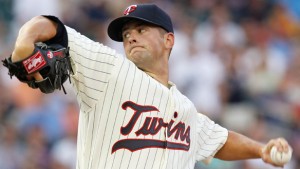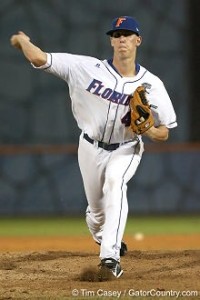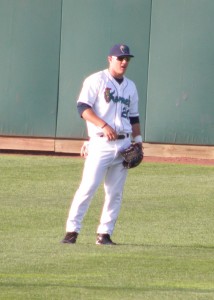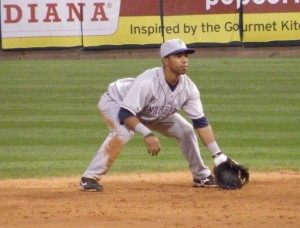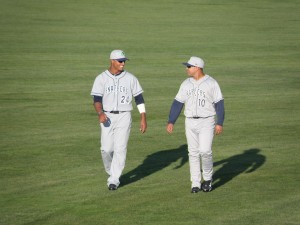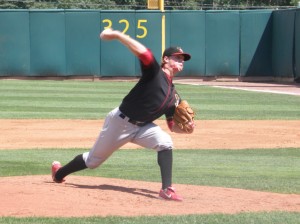The 25-man roster is not yet set in stone, but if we take a look at the 40-man roster we can get some kind of idea about where the Twins players closest to the Major Leagues come from.
Drafted out of High School (12, 5 pitchers, 7 position players)
Alex Burnett, 12th round 2005 (375 overall); B.J. Hermsen, 6th round 2008 (186); Tyler Robertson, 3rd round 2006 (96); Anthony Swarzak, 2nd round 2004 (61); Michael Tonkin, 30th round 2008 (906); Joe Mauer, 1st round 2001 (1); Brian Dozier, 8th round 2009 (252); Justin Morneau, 3rd round 1999 (89); Chris Parmelee, 1st round 2006 (20); Trevor Plouffe, 1st round 2004 (20); Joe Benson, 2nd round 2006 (64); Aaron Hicks, 1st round 2008 (14)
Unsurprisingly the Twins largest group of players on the 40-man roster come as high school draftees. There is a fairly good mix of position players and pitchers, though of the pitchers on the list none of them were drafted in the first round, compared to 4 first round position players*. This makes sense as the arms on this list are all bullpen guys, not a single player there with really dominant stuff.
*Byron Buxton, the Twins most recent 1st round draft pick was just 5 years old when the Twins drafted Justin Morneau in 1999. Morny has been with the team a long time, it will be interesting to see if the Twins look to move him later this year.
Free Agent (10, 7 pitchers, 3 position players)
Jared Burton, 2011; Kevin Correia, 2012; Cole De Vries, 2006 (undrafted out of University of Minnesota); Casey Fien, 2012; Mike Pelfrey, 2012; Caleb Thielbar, 2011; Tim Wood, 2012; Ryan Doumit, 2011; Jamey Carroll, 2011; Josh Willingham, 2011
Likely because the Twins spent so many high draft picks on position players, the Twins have struggled to develop their own pitching and have turned to the free agent market to balance their roster. As with the high school draftees, none of the arms on this list are particularly dominant, though Burton was a pleasant surprise in 2012.
Trade (6, 4 pitchers, 2 position players)
Scott Diamond, 2011 (Billy Bullock); Pedro Hernandez, 2012 (Francisco Liriano); Eduardo Escobar, 2012 (Liriano); Trevor May, 2012 (Ben Revere); Vance Worley, 2012 (Revere); Drew Butera, 2007 (Luis Castillo)
I listed Scott Diamond as a player acquired via trade, but he originally joined the Twins through the 2010 Rule 5 draft, but when he failed to make the roster out of Spring Training the Twins completed a trade with the Atlanta Braves in order to keep him with the organization. Of the other names here, only Butera sticks out, only because with his ties to the organization (his father Sal Butera was with the Twins for parts of 6 Minor League and 4 Major League seasons) I often forget that he was not originally drafted by the Twins.
Drafted out of College (4, 3 pitchers, 1 position player)
Brian Duensing, 3rd round 2005 (84); Kyle Gibson, 1st round 2009 (22); Glen Perkins, 1st round 2004 (22); Chris Herrmann, 6th round 2009 (192)
Again, because the Twins were not drafting and developing high school pitching they have used several early round picks on college pitchers in an effort to balance the system. Of the two 1st rounders here, only Gibson was the Twins 1st overall pick of the draft, Perkins was selected after Trevor Plouffe, with a compensation pick from the Mariners when they signed Eddie Guardado. In fact, in the 2004 draft the Twins had 3 first round picks and 2 more supplemental round picks, giving them 5 of the first 39 draft picks and 7 of the first 100. Of those seven picks, Plouffe, Perkins and Anthony Swarzak are all still with the Twins, 9 years later.
International Free Agent (4, 1 pitcher, 3 position players)
Liam Hendriks, 2007; Josmil Pinto, 2006; Daniel Santana, 2008; Oswaldo Arcia, 2008
Pretty young group of players here, but lots of upside with Santana and Arcia cracking MLB’s list of Top 20 Twins prospects.
Waiver (3, 1 pitcher, 2 position players)
Josh Roenicke, 2012 (Rockies); Pedro Florimon, 2011 (Orioles); Darin Mastroianni, 2012 (Blue Jays)
As you’d expect, no superstars in this trio, but two of these guys could be in the starting lineup on Opening Day.
Rule 5 Draft (1, 1 pitcher, 0 position players)
Ryan Pressly, 2012 (Red Sox)
It remains to be seen if Pressly will make the 25-man roster out of Spring Training, though the cards are certainly stacked against him. If the Twins are going to keep him long term, they’ll need to work out a trade with the Boston Red Sox to keep him in the organization if he is not on the big league roster.
So there you have it, 40 players and their origins within the Twins organization. With high school draft picks making up the lion’s share of the roster, the Twins amateur scouts seem to know what they’re doing. That bodes well for the future and Byron Buxton, Jose Berrios, Travis Harrison and Hudson Boyd, the Twins’ highest drafted high school players in the past two drafts.
-ERolfPleiss
All player information obtained from Baseball-Reference. If I’ve listed any player origins incorrectly, please let me know.
